Green Building Techniques Save Home on Mountain Drive
One Tea Fire Homeowner's Experience Is a Lesson for Us All
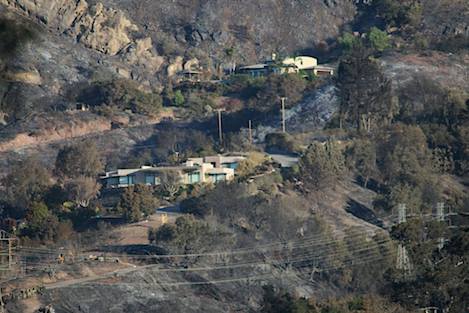
Editor’s Note: The following story was provided by Karen Feeney of Allen & Associates to highlight the impact that using green building techniques can have on providing protection against wildfires such as the Tea Fire.
In the midst of the devastation created by the Tea Fire, there are a few stories of families whose homes escaped the fire unscathed. While some of these stories seem like simple twists of fate or, in some cases, miracles, other stories tell of people who strategically designed their homes to survive a fire. Marlene and David Berry’s is one of these stories.
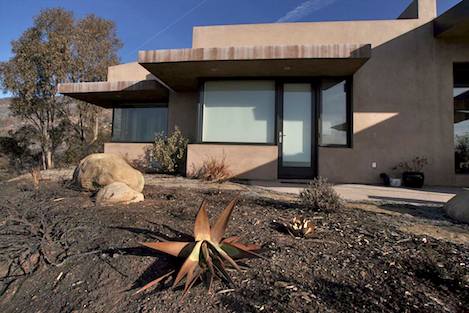
Although the Tea Fire surrounded their home, literally burning up to their front door, their house survived with hardly a trace of soot. Sure, they lost most of the plants in their fire-resistant landscaping and there are marks from burning embers that landed on the wooden threshold of a door leading into their garage (the only non-metal threshold in their house). But their home is intact, along with everything in it.
So, why were the Berrys so lucky? The answer: it wasn’t just luck.
David and Marlene completed construction of their new home on West Mountain Drive in April 2006. The home, designed by local architect Richard Starnes and built by general contractor Allen Associates, won the Santa Barbara Contractors Association’s Best Green Residence Award in 2006. The home also received accolades – long before the Tea Fire – from the Santa Barbara City Fire Department for its fire-resistant design. It turns out that many of the green features the Berrys selected for their home contributed to its fire resistance.
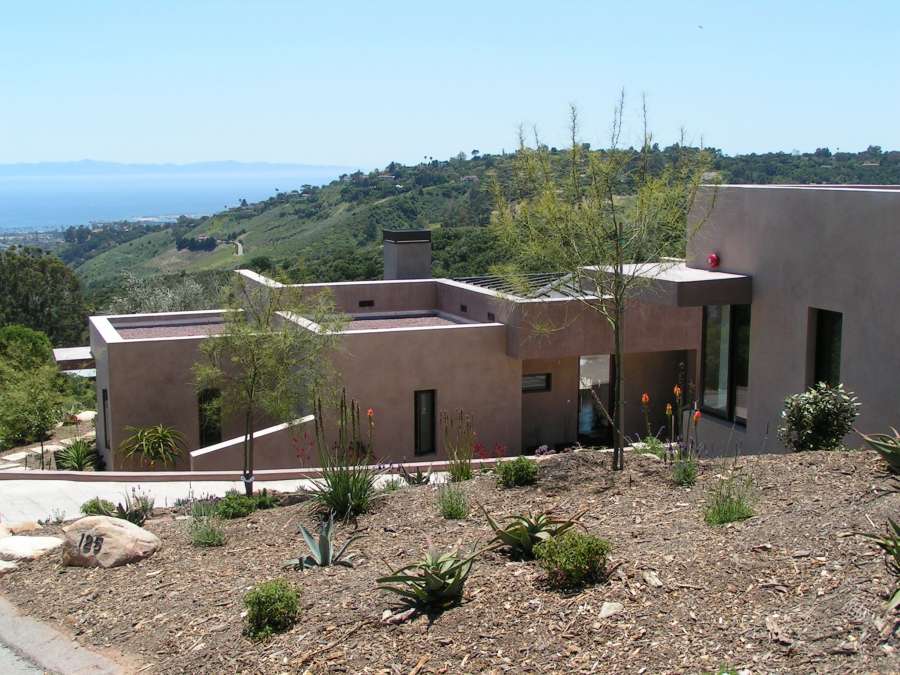
“When we moved to Santa Barbara and built our new home, we were very conscious that Southern California was fire-prone. It turned out that many of the fire-resistant features recommended by our architect and the fire department – a standing seam metal roof, stucco walls, metal clad eaves – fit into our design aesthetic as well as our green building goals.”
“In designing our home, we listened to advice from our architect, our contractor, and the Santa Barbara Fire Department. The decisions we made felt like common sense,” David said. “We often get temperatures close to 100 degrees [Fahrenheit] during the summer here on Mountain Drive. Why wouldn’t we want our home to be built with well-insulated walls and high performance windows? We did not know that these features were the key to the survival of our house last week.”
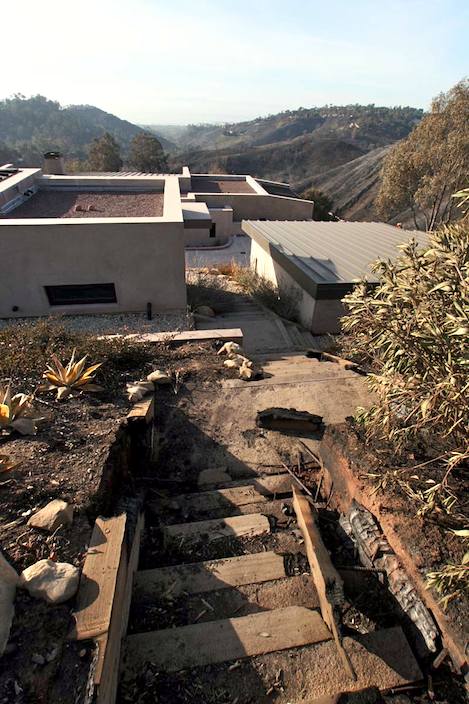
Temperatures outside the Berrys’ home most likely exceeded 1,000 degrees during the fire, potentially causing the interior of the home to self-combust.
“After the fire, we checked our programmable thermostat when we returned to the house and found that during the fire, the temperature inside the house never rose above 84 degrees,” David explained. The Berrys’ home was also equipped with a fire sprinkling system that would have activated when the interior temperature reached 140 degrees, but it never did.
In the process of designing their home, the Berrys also met with Ann Marx, wildlife interface specialist for the City of Santa Barbara, to learn what they could about making their home fire-safe. Marx suggested clearing brush around the home and planting a landscape that did not require supplemental irrigation in order to create a natural transition area between their home and the surrounding chaparral vegetation. The plants Marx recommended for the landscape included drought-tolerant natives as well as aloes and cactus closer to the house. Marx also recommended that the Berrys design with closed eaves to prevent burning embers from entering their home and without an attic to avoid the potential for a fire to spread quickly.
Other green building choices that Allen Associates and Rick Starnes recommended and which contributed to the survival of the Berrys’ home include the following:
- Selecting a radiant space heating system, instead of a traditional forced air system, to eliminate the need for ducting. Fires can spread throughout a home by traveling through HVAC duct systems.
- Installing metal clad, energy-efficient windows instead of ones with wood cladding and single panes.
- Building the home with 12-inch-thick exterior walls filled with cellulose insulation with an R value of 40. (R value refers to a substance’s inherent thermal resistance.) The California Building Code only requires R-13 insulation in exterior walls.
- Installing cellulose insulation in the roof with an R-value of 60 – California Building Code only requires R-19.
- Properly sealing doors and windows throughout the house which prevented burning embers from entering the home.
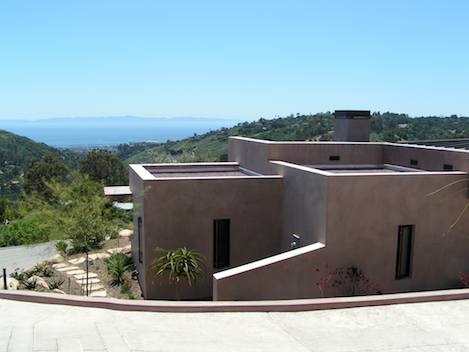
The Berrys are also starting a list of things they wished they hadn’t done. Two items they already know will be on that list are include planting olive trees, as their high oil content makes them prone to igniting during a fire, and using wood bark chips as ground cover in their landscape, because they burned and contributed to the amount of embers around their home.
4•1•1
On December 13, a group of local architects, builders, and energy experts will be offering an educational workshop for victims of the Tea Fire. The goal of the workshop is to offer suggestions on how people can rebuild their homes greener, more fire resistant, and more energy efficient. The Berrys’ story will be shared as an example at that presentation. The time and location of the workshop is to be announced.



